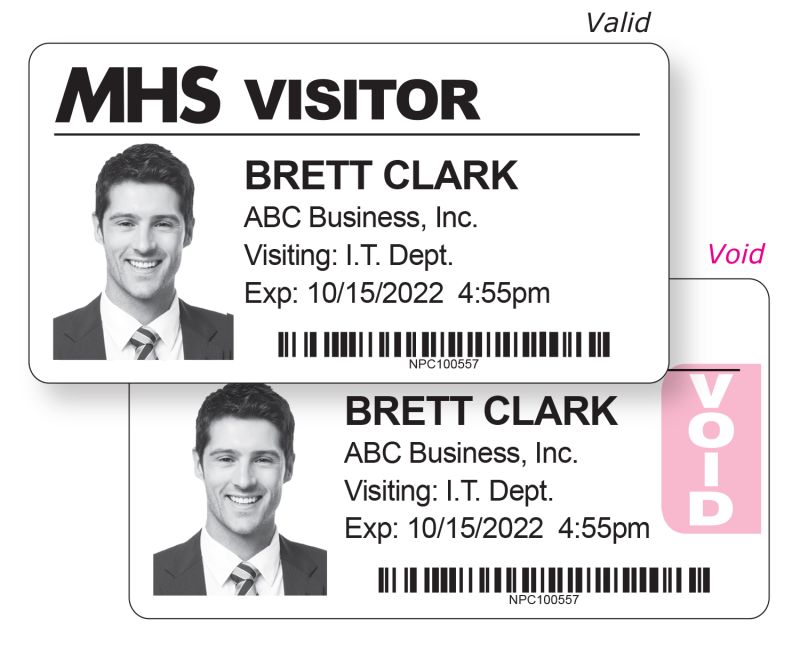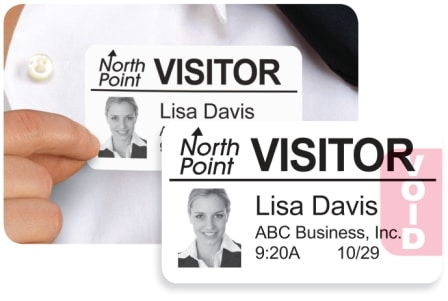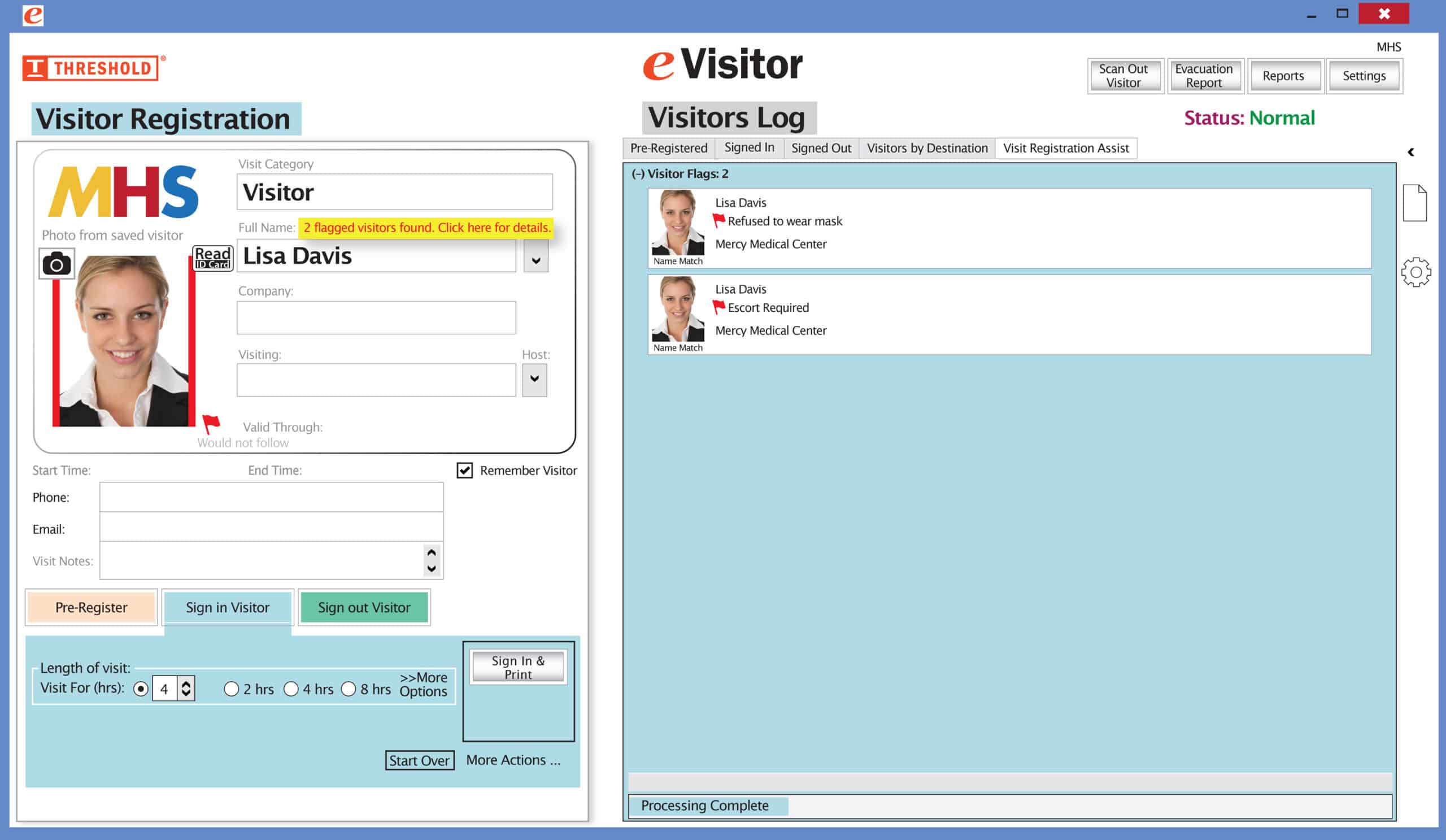The most frequently asked questions from buyers of our Visitor Badge products are about expiring badges. How do they work? When do they change color?
For years we have described these self-expiring visitor badges as having the capacity to “change color overnight.” In other words, they may be “valid today,” but they will be “void tomorrow.” The word “void,” literally, is what appears on our expiring badges over time to signal that they may no longer be used as legitimate forms of visitor identification.
A common misconception. Our use of the term “overnight” has led some people to conclude that these visitor labels, when activated, will change in exactly 24 hours’ time. In other words, the visitor pass is still valid at Hour 23, but, at Hour 24, it instantly becomes void, like turning on a light. In actuality, our color-changing process is more gradual than that.
How expiring works. To activate our expiring visitor badges, a second layer of material, with a specially treated surface, is pressed to the back of the visitor label. Red ink from this second layer seeps through the label from behind until it becomes visible on the front. “Security you can see” helps with visitor identification.
What affects the timing. This color-changing process is both time- and temperature-sensitive. We have engineered the badges to remain valid for most of a business day at room temperature. In addition to climate, the timing of the expiration is affected by body heat as well. A visitor label worn on a t-shirt close to the skin in a hot factory will change more quickly than a visitor label worn on a suit coat in an air-conditioned office. On average, you will start to notice a very pale “void” image after four to six hours or so (well after the duration of an average visit), with the intensity of the color increasing slowly.
“Void tomorrow.” But no matter when you issue a visitor I.D. — morning, afternoon, or evening — by the next day the “void” will leave no doubt the badge has completely expired. This means it cannot be reused another time to gain unauthorized access to a facility. So, when employees see someone wearing a visitor identification, they can tell if that person has permission to be in the building or not. (In addition, using badges that expire helps your people at the front desk, because they don’t have to worry about collecting visitor badges every time visitors leave.)
Deterrence vs. Detection. We doubt many people try to gain unescorted access inside a facility wearing an expired visitor badge, because it exposes them as trespassers right away. In most cases, we believe the voided badge prevents unauthorized use in the first place. And deterrence is the best line of defense in any good security protocol.



 It’s easy and free to activate this feature. Simply call us and ask for “Red Flag, No Badge” to be turned on. Once it’s on, the above pop-up will come up when a red flagged visitor comes back. No badge will print and the attendant will need to follow the facility’s policy for handling red flagged visitors.
It’s easy and free to activate this feature. Simply call us and ask for “Red Flag, No Badge” to be turned on. Once it’s on, the above pop-up will come up when a red flagged visitor comes back. No badge will print and the attendant will need to follow the facility’s policy for handling red flagged visitors.